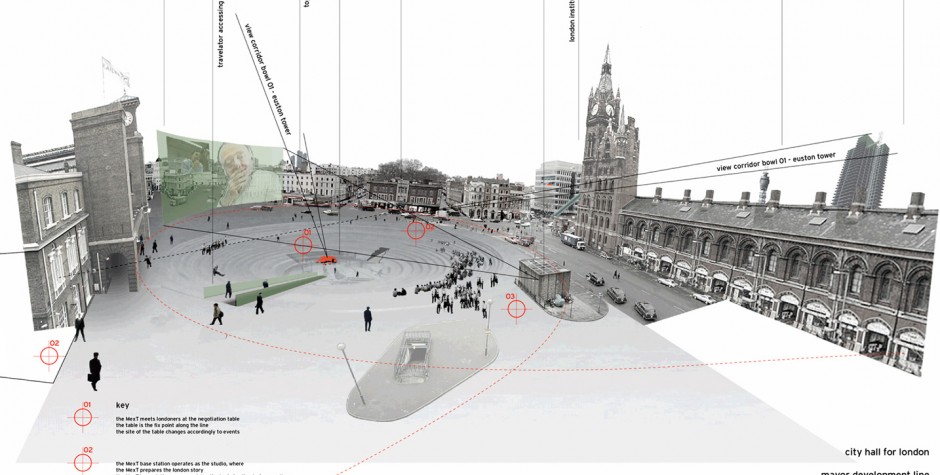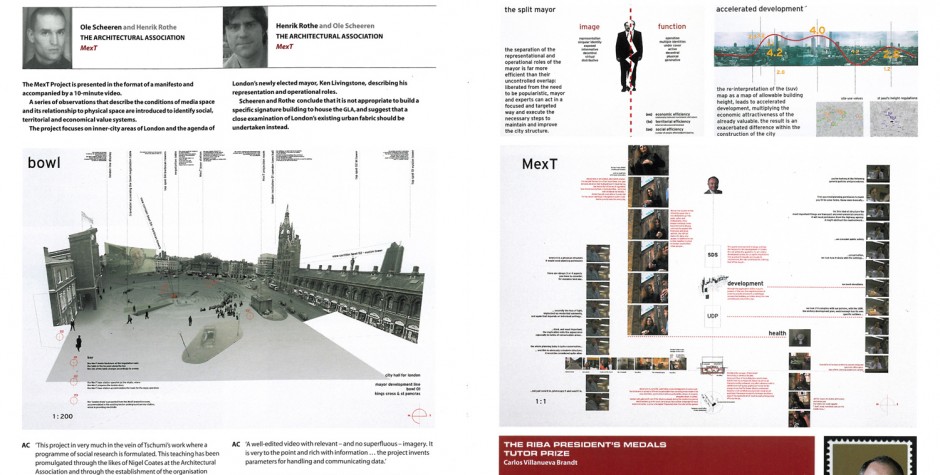A City hall for London
“Utopian though the project may seem, the investigations reveal the surprising extent to which we take for granted our supposedly-democratic process of government, and also the hierarchical strada of social and political organisations which structure life in the city. At the same time making manifest, and subtly appropriating these structures, a model is offered for urban planning which is sure to find a real-life application in the near future.”
Ally Ireson and Nick Barley, City levels, August Birkhäuser publication, London 2000
The MexT Project explores provisional conditions of accommodating the major in London through establishing direct communication between the public and the city government. Communication screens across the city provide information about the authority’s actions. The major moves between locations, crossing all territories, mediating and connecting the heterogeneous particles of the system. The scheme attempts to integrate citizens as private individuals and public actors, through their response to the display of the processes of the city government.
The project was awarded the RIBA Medal in 2000 and published in City Levels by Birkhäuser, London 2000, in arch+ Dec ‘01 and the Architects’ Journal Sept ‘99.
Manifesto
The city hall of London spreads out in a liner way.
The city hall extends its presence onto larger areas of London than a singular building can.
The regulations formed by this new spatial condition produce public urban space which belongs on one side to the city hall, on the other hand it is part of the city.
Its shear presence as a linear structure is capable to penetrate the city fabric and to connect urban programmes and to transform private into public space.
it is the city hall itself and its regulations applied to its surrounding which generate conditions of maximum social efficiency.
The split mayor
The separation between representational and functional elements proves a far greater efficiency than their uncontrolled overlap: horizontal and vertical interventions/actions are split to operate within the complex whole of the city administration.
The City hall
A hybrid and decentral structure is proposed to implement the new government: a continuous line with fixpoints and in-between amplitudes both separates and connects the multiple elements of the city hall: representation surfaces, communication interfaces, assembly areas, office systems, institutions and staff. the line acts as a tool for specific and focused interventions within London’s city fabric – a diagram of the city.
Manifestation
The points contain all representational and aspects of the system. A series of physical interventions, inclusions and connections manifest together with media elements presence and accountability of the GLA.
Operation
The MexT, a team of professional operators, establishes a line of negotiation and involvement of people and individual conditions along the line of the city hall. Constantly moving between the fixpoints, the flexibility of the negotiation line gradually covers the whole territory of the city.



Comments are closed.